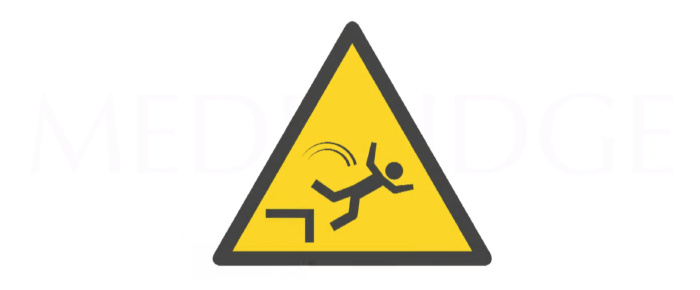Four Major Risks of Falls in the Older Patients

“My community-dwelling older clients are telling me they have fallen or have stopped doing their activities because they might fall.” HELP! Where do I start?
Many therapists and other healthcare providers often face these situations, asking questions about how or what to use to assess and treat fall risks and fear of falling. Good news, many falls are preventable! Learn four risks of falls and how they may affect a person’s level of engagement in daily activities, hobbies, socialization, and mood.
Four Risks Factors of Falls
Although some risk factors – including age and gender – cannot be modified, others, if identified by a therapist, can be addressed. To help minimize the risk of falls and fear of falling and improve your patient’s engagement and outcomes, monitor the four risk factors below.
1. Unsafe Environments
Environments that include poor lighting/glare, no handrails on stairs, no grab bars inside and outside bathtub/shower, and throw rugs are a few examples that may lead to an increase in risk of fall. You must ensure your client will be discharged to a safe environment both inside and outside the home.
2. Poor Vision
Decreased vision in contrast, sensitivity, and/or depth perception may cause your client to stumble when going up/down steps or walking over uneven surfaces. To minimize this risk factor, you can:
- Provide ample lighting – consider using automatic sensor lighting for stairways or outside steps;
- Mark top and bottom step with contrasting color or take a file and make a groove on the underside of the handrail at the top and bottom step so the person can feel when the top/bottom step have been reached;
- Encourage the person with the visual impairment to ask for assistance when walking outside at dusk or in an unfamiliar area.
3. Poly-pharmacy
Taking 4 or more prescribed medications places an older adult at higher risk for falling. Be sure you talk to your patient and have the pharmacist or doctor review all medications at least once a year and when a medication has been added, stopped, or changed. Ask the pharmacist to use a large font for the medication label, and make sure your patient understands what the instructions mean.
4. Balance and Gait Deficits
Can your patient simultaneously walk and perform an activity? If not, collaborate with PT and/or refer your patient to community Tai chi classes or other exercise programs.
Tools Available for Therapists
It really does take a “village” to address this pervasive issue surrounding older adults and their families. However, there are many tools available at your fingertips.
One tool, The Falls Efficacy Scale-International, is used to determine your patient’s level of fear and possible reasons for avoiding therapy activities requiring them to stand or walk.
To measure your patient’s mood levels, you can use the Geriatric Depression Scale-Short Form or GAD-7 (Generalized Anxiety Disorder) tools. Many patients who have a fall risk and/or fear of falling typically suffer both depression and anxiety. With this tool you will be able to assess and address your patient’s mood.
Since activity engagement and occupational performance are central tenets of therapy, it is crucial for therapists to identify each patient’s fall risks and fall history in order to develop effective intervention strategies so the patient may “Live Life to its Fullest.”




